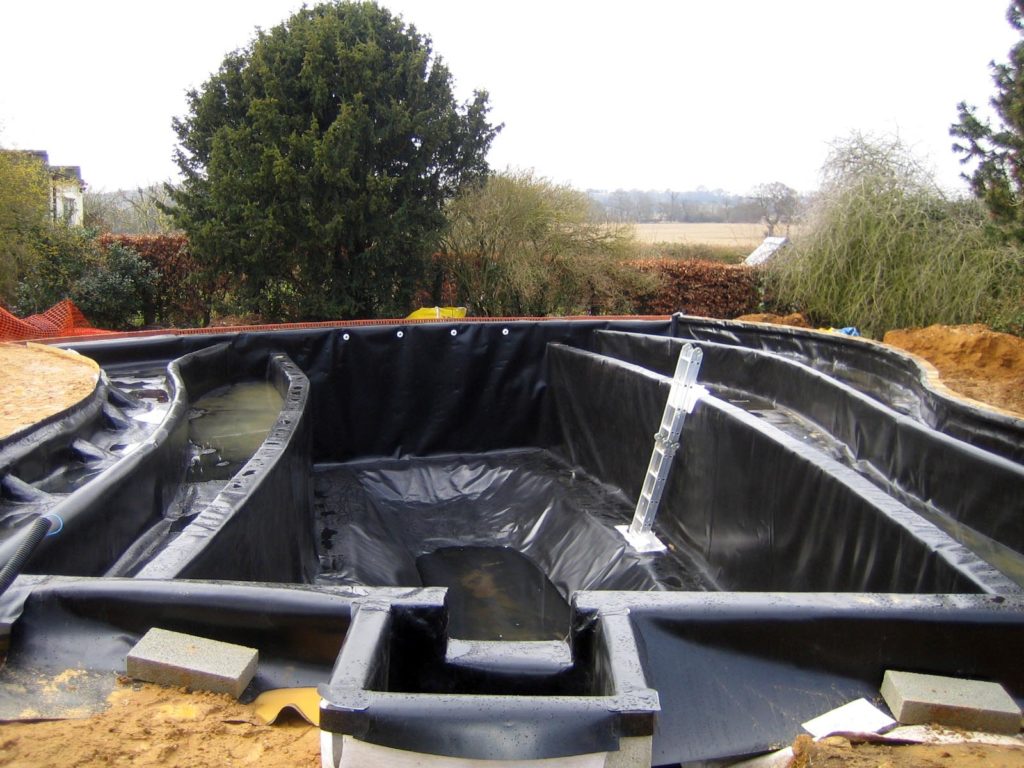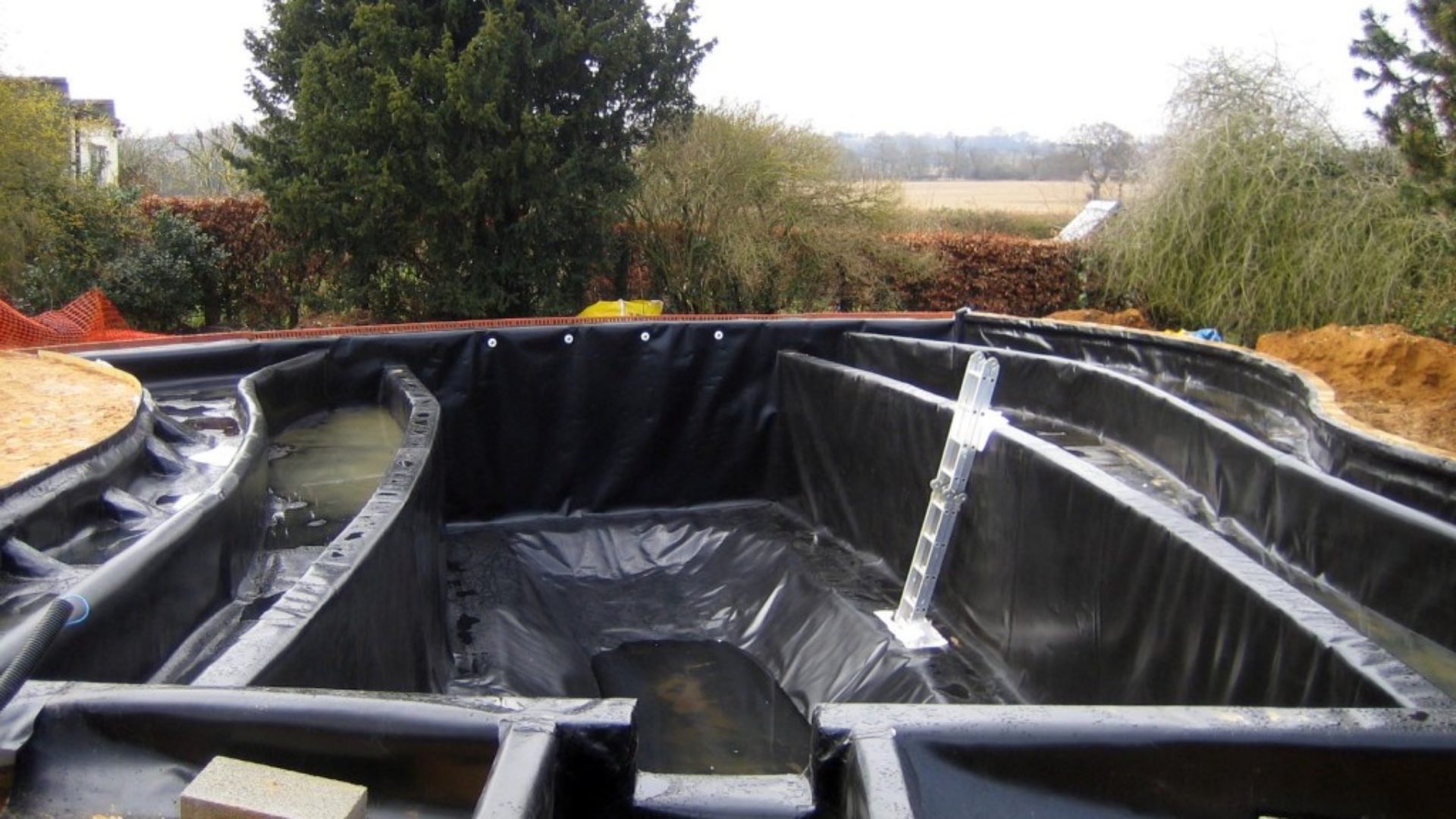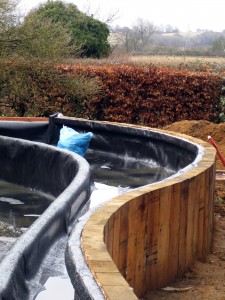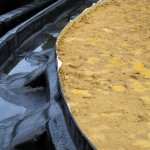
The completed liner for the swimming pond, looking towards the path end. The skimmer pit is in the foreground.
As of Friday night, the installation of the liner is finished and the pool is (hopefully) watertight. I will resist all the obvious puns regarding liners and launching. Suffice to say that although we didn’t crack any bottles of champagne on the ‘bow’ of the pool, we had a small celebratory drink at what is after all a landmark in the construction.
You might remember from (much) earlier posts that we decided to go for polypropylene rather than PVC partly on the grounds of it being manufactured in the UK, but also because it is a lot less environmentally damaging in manufacture. My concern with this was that it was very stiff and might look a bit ruckled following installation. I needn’t have worried. The appropriately named Tim Pool (yes, really) who is doing the installation of the liner for us did a fantastic job with almost no creases or ugly lumps. It did take quite a lot longer than we expected (like most things on this job), but the result looks great. I have posted a couple of pictures of some of the details as well as the main photo. The marginal beds with curves on both sides were particularly difficult. To seal the liner against the sleepers was tricky – we don’t like to make things easy for ourselves – we used a chunky piece of larch that we used to secure the liner against the timber sleepers and then enclose in liner. This stops the liner tearing against the fixings once loaded with water.
On the lawn side we used a similar method with a strip of metal bolted to the metal edging, which was in turn secured in concrete haunching. This may all seem a bit belt and braces but the pull on the liner once it is full of more than 200 tonnes of water is huge.
Although the rain has made working on the lawn grade difficult, we have made progress towards final levels. So much so that I am now beginning to think we might not have enough subsoil and topsoil! All those enormous piles have gone – I can’t quite believe that all the calculations were right.
What I really cannot face is the incessant battles with the local mole population which has gone on for the last six years. This peaked when, on our return from our summer holiday a few years ago, we were confronted 40 molehills on the lawn. My heart sank. I spent 3hrs or so on my hands and knees opening the tunnels and burying all the soil so the lawn was green again. Next morning: ten fresh molehills – this was war! We tried everything – flooding the tunnels, battery operated sonic devices, solar powered devices, traps, with limited success. The ultimate indignity was finding a sonic device toppled by a fresh molehill – a sort of moley ‘two-fingered’ response. The dispute as to whose lawn it was dragged on for several years until I recently solved it (temporarily) by digging it all up. We had to find a more permanent solution by which we could both share the lawn. After a lot of research, we have come down in favour of a German product (suggested by Jens in our design office) which allows the moles to tunnel beneath the lawn but prevents them producing molehills. An honourable compromise that should restore peace. You can get details from Harald Unger at http://molebarrier.com/3.html. It is installed about 50-70mm below the surface of the turf. If I never see another molehill, it will be worth it.
From now it is a sprint to the finish. Marginal beds in the pool to be filled and planted, plumbing completed, paving laid, pool filled, lighting to be installed, lawn laid and decking constructed (both underwater and outside the pool). Soon there will be no more mud in the house…




